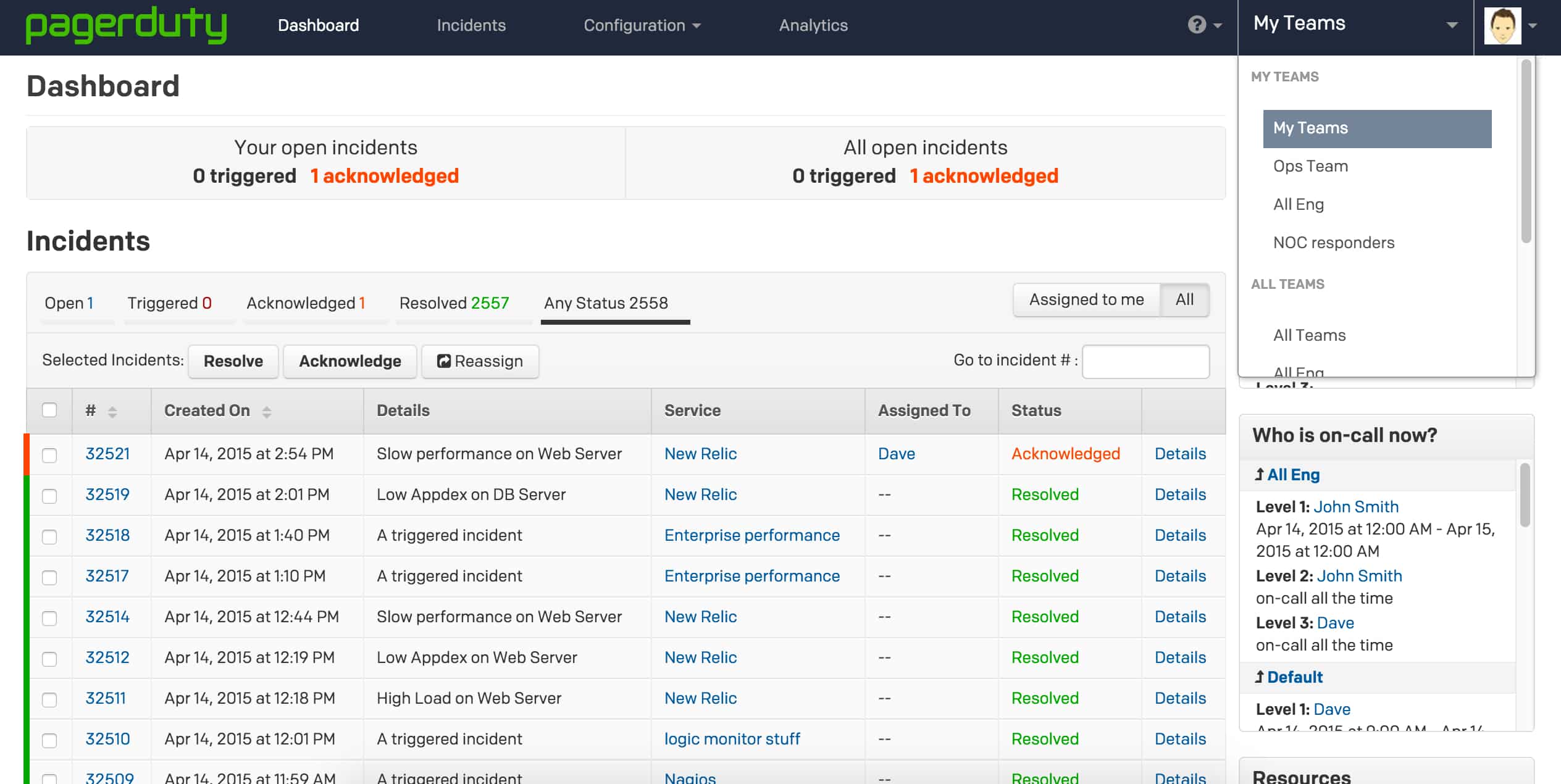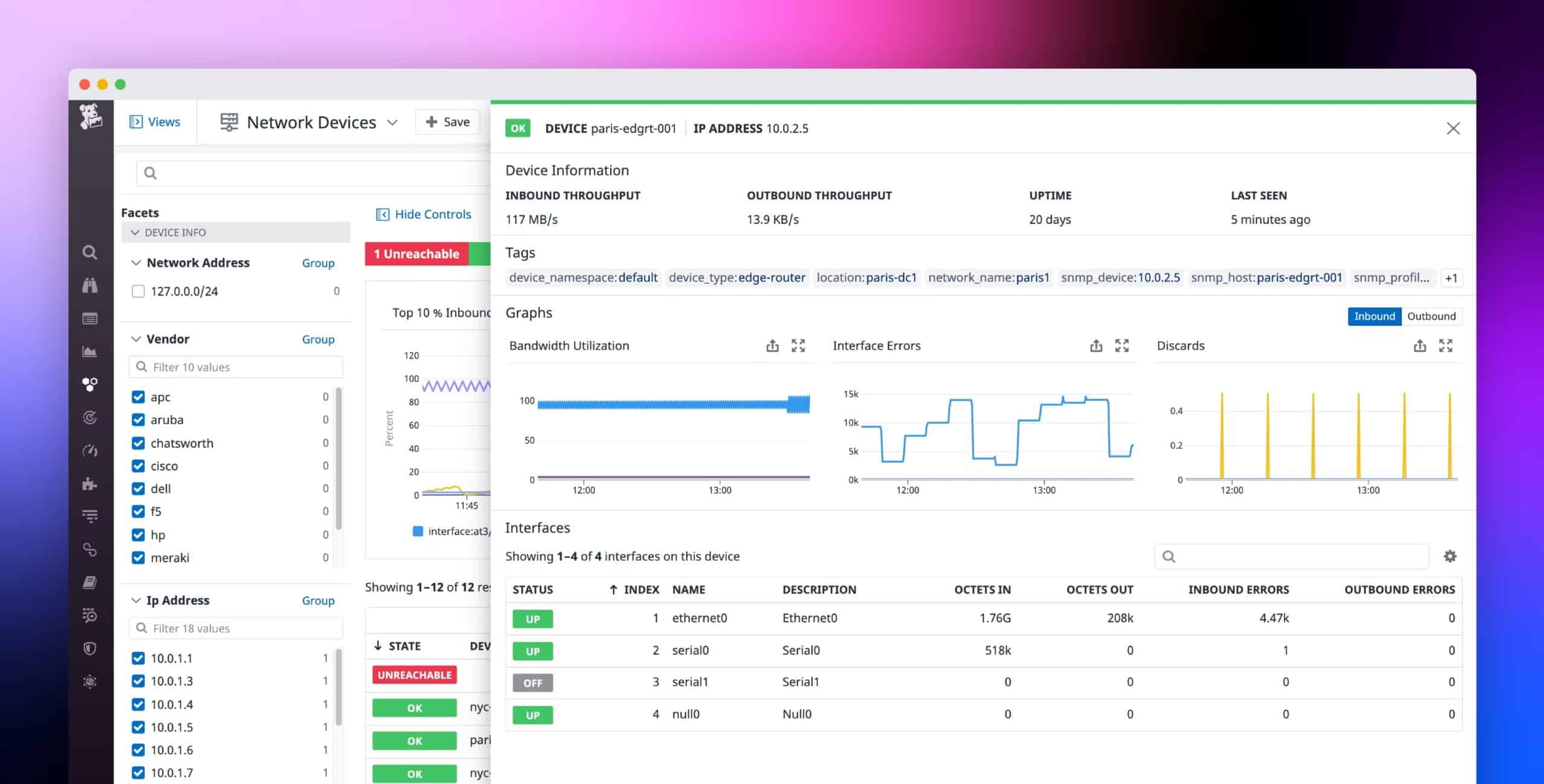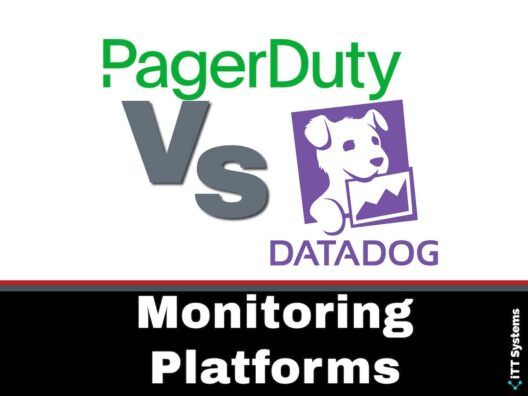Monitoring platforms are an essential part of your infrastructure, as they continually assess the health and performance of the different hardware and software components in your network. In case of any issues or big variations in performance, these platforms send alerts, so you can fix them quickly.
They also reduce the chances of downtime, and can even bring your attention to a possible security gap or vulnerability. Many of these platforms even provide contextual information, so troubleshooting is a breeze.
Due to the many benefits of these monitoring platforms, there are many options available for you today. Each platform has its unique features, so you'll simply have to pick the one that suits your organization and its infrastructure. But we can ease this decision-making for you, as we compare different products and their features.
As a part of our comparison series, today, we'll be comparing Datadog with PagerDuty. While these two tools are often seen as competing ones, they are in reality very different from each other. They work well together, so you can leverage the combined features of these two platforms.
Let's now look at each of these platforms, and see how they work well together.
What's PagerDuty?

PagerDuty is a SaaS-based alert management tool that empowers your IT and DevOps teams to get notifications about errors, so they can resolve and handle it efficiently. In particular, it helps to reduce the time it takes to resolve incidents that impact your business operations.
Features
Let's now take a brief look at PagerDuty's features.
- Supports automated incident response, including the automation of tasks across teams.
- Improves the quality of operations using machine learning and AI.
- Enables cross-functional teams to perform at optimal efficiency.
- Resolves critical incidents quickly to improve the end-customer experience.
- Automates end-to-end responses.
- Creates a timeline of activities to facilitate continuous learning and improvement.
- Integrates well with many ITSM and monitoring platforms.
Overall, PagerDuty is an incident response platform that automates tasks, enables communication, and leverages the power of machine learning to continuously improve the existing processes.
What's Datadog?

Datadog is also a SaaS-based platform but is a more comprehensive platform for monitoring the performance of different components on your infrastructure. It also handles event monitoring for cloud services and tools such as servers, databases, and containers.
Datadog comes in handy for monitoring large networks as the sheer size and spread of these networks make it difficult to monitor each metric/aspect individually. Also, Datadog's advanced features make it easy to identify security gaps, so the risk of cyberattacks and data breaches reduces.
Features
Below are some of the salient features of Datadog.
- Collates data from different parts of your network and presents a centralized view of the same.
- Integrates well with more than 450 services and applications.
- Enables monitoring and troubleshooting in applications.
- Generates custom reports and dashboards to provide the insights you need.
- Optimize the performance of your applications.
- Extensively monitors user experience.
- Sends alerts for critical issues.
In all, Datadog is a monitoring and observability platform that provides the insights you need to understand the state of your infrastructure and make appropriate decisions to optimize its performance.
Now that you know what these individual platforms are, it's evident that they are not competing against each other. So, let's see how they can be used together to get what you want.
Datadog and PagerDuty – A Possible Integration
As we saw earlier, Datadog is a network monitoring solution while PagerDuty is an alert monitoring tool. From an operational standpoint, you can use Datadog to track the metrics of your network's performance and PagerDuty to streamline incident response and communication.
At first glance, it may feel like Datadog is enough by itself as it monitors the performance, identifies the security gap, sends alerts, and provides the contextual information needed to address the said issue.
While that's true, PagerDuty can also come in handy to improve communication across teams and to automate and track the related tasks across teams.
In particular, PagerDuty integration is essential for large organizations that have multiple teams spread across different geographies. PagerDuty will ensure that the communication between these teams is smooth, so the issue gets resolved quickly.
Leveraging DataDog and PagerDuty
Now that we know how Datadog and PagerDuty can be integrated for better results, let's drill down deeper into this integration and see some practical benefits that come from bringing these two platforms together.
Improving the Reliability of Third-Party Service Providers
When you use PagerDuty to send alerts, the request is routed through the network service provider. In other words, PagerDuty may initiate an SMS alert, but the delivery depends on the cellular phone service provider. In the case of emergencies, the cell phone service may be suspended or unavailable. In such cases, the SMS alerts are not delivered.
This problem is addressed when you integrate PagerDuty with Datadog. The two companies have created something called End-to-End Third-Party Provider Testing Practice. In the joint practice, PagerDuty sends SMS alerts to three cell phone numbers, each running on a different cell phone provider network. These alerts are sent in a round-robin fashion.
Datadog's features are used to calculate the amount of time it takes for each SMS to reach the three cell phones, and accordingly, PagerDuty can identify which networks are down, and which is the best service for sending out an alert. Accordingly, it sends the SMS to the cell phone configured in that cell phone network.
This is a complex problem and one that has been solved by integrating the two platforms. As a result, the end-users are always notified of critical issues, even when there are issues with some cell phone providers. This way, PagerDuty takes the responsibility to ensure that the alert reaches the recipient and uses Datadog's capabilities for the same.
Custom Workflows for On-call Teams
Datadog is well-known for its extensive dashboards and reports. You can get all the information you want to know in a single pane with Datadog. Further, these dashboard views and reports can be customized as well, so you see the information that's most relevant to you.
This feature of Datadog can be particularly helpful for on-call teams that look to find the problem or statistics needed for handling their customers in real-time. In other words, Datadog's dashboards and reports can be made available to on-call teams that use PagerDuty.
Moreover, PagerDuty's Workflow Extension feature enables users to quickly add collaboration tools, add-ons, and anything else needed to create custom workflows. All this means that an on-call team can provide a dynamic incident response that's personalized and in real-time.
Imagine the difference that such a service can make to the quality of customer service. That's the power of combining these two platforms.
Gathering and Delivering Metrics
Datadog is well-known for its extensive capabilities to gather data from different sources and display them in a single unified view. However, this is only one side of the coin, especially when the metrics detect anomalies in operations. It becomes complete only when these anomalies are sent as alerts to the concerned employees, so the same is fixed right away. And this is where PagerDuty comes in.
You can set up the integration in such a way that as soon as Datadog detects an anomaly or problem, it immediately triggers an alert through PagerDuty. This way, the problem is communicated in real-time and can add a lot of value to the organization.
Thus, Datadog and PagerDuty can be combined to effectively provide a ton of enhanced functionality for your organization. Though there's a minor overlap in the features of both these platforms, still their integration can add greater business value for your organization. And the best part is that this integration is both ways, which means, you can have Datadog as an add-on to PagerDuty and vice-versa. This flexibility ensures that all customers can get the best of both worlds.
In all, consider integrating the two platforms as the combined synergy can be highly beneficial for your organization.
Final Thoughts
To conclude, PagerDuty and Datadog are completely different tools, so a comparison is meaningless.
That said, they can be integrated to gain greater business value. PagerDuty is an alert management tool while Datadog is a network monitoring tool. When you combine the two, you can come up with many use-cases and benefits, like the ones mentioned above. Also, the integration between these two platforms is a breeze, and there's extensive documentation on both sites that enable anyone to handle this integration.
For the more technical users, API calls can be used for more customization in your existing infrastructure. You can configure alerts through PagerDuty for specific events that are detected by Datadog. Needless to say, this level of customization can improve your existing processes and more importantly, enhance the quality of service offered to end customers.
We hope this article enthuses you to try this integration between Datadog and PagerDuty to make the most of the capabilities of both platforms. For more such comparisons and guides, make sure to check out our comparison series of articles.




